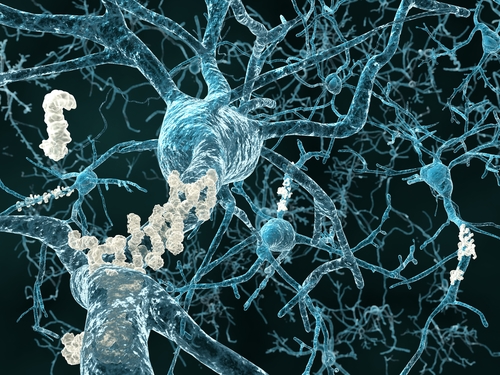New Peptide Structure Can Help Prevent and Treat Amyloid Diseases Such As Alzheimer’s
Written by |

 Bioengineers at the University of Washington have designed peptide structures that can neutralize the conversion of a protein from its normal state into an abnormally folded, toxic form, preventing more than 40 amyloid diseases such as Alzheimer’s, Parkinson’s or Type 2 diabetes, for example. Ultimately, this could allow doctors to diagnose and treat diseases like Alzheimer’s, which currently has no cure.
Bioengineers at the University of Washington have designed peptide structures that can neutralize the conversion of a protein from its normal state into an abnormally folded, toxic form, preventing more than 40 amyloid diseases such as Alzheimer’s, Parkinson’s or Type 2 diabetes, for example. Ultimately, this could allow doctors to diagnose and treat diseases like Alzheimer’s, which currently has no cure.
Researchers, who published their findings in the journal eLife, tested their peptides, called “alfa sheet,” for anti-amyloidogenic activity in a fibrillization assay using transthyretin (a serum and cerebrospinal fluid carrier of the thyroid hormone thyroxine and retinol-binding protein bound to retinol). Four of the five peptides they designed were co-incubated with transthyretin at pH 4.5 to trigger dissociation of the native tetramer followed by aggregation.
Aiming to target the toxic middle state a protein goes through as it transitions from normal to abnormal, the Washington team determined when the toxic oligomeric species was present during the course of aggregation. The toxicity of transthyretin was assessed by monitoring cell viability after treating SH-SY5Y neuroblastoma cells with transthyretin that had been allowed to aggregate for different periods of time at pH 4.5. Toxicity was apparent around 24 hours. Under these conditions, the viability of the treated cells was reduced by approximately 20%, indicating that transthyretin was aggregating via the toxic pathway.
[adrotate group=”3″]
To further probe which species the peptide structures are binding to, researchers immobilized the designs on agarose beads and applied solutions of either fresh or pre-incubated, toxic samples of Aβ and transthyretin. Two of the alfa sheets inhibited both transthyretin and Aβ aggregation in solution, and the peptide structures were thus demonstrated to effectively attack the toxic state of the protein.
These findings bring new hope to Alzheimer’s disease patients, since from the moment doctors can catch and neutralize the toxic version of these proteins, then the body will hopefully never get any further damage, said in a press release senior author Valerie Daggett, a UW professor of bioengineering.





